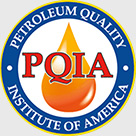When Great Lakes Coca-Cola Bottling in Eagan, MN needed to streamline their lubricant program, they reached out to several potential partners to help them meet the challenge. PetroChoice was able to quickly identify their issues and optimize their operations
The Challenge
It all started with a challenge from the Vice President of Supply Chain; build out a best-in-class lube room as part of a plant-wide 5S initiative. But for the folks at Great Lakes Coca-Cola, that was easier said than done. Their current situation was certainly less than ideal.
“Essentially, it was a disaster,” Production Operations Manager David Sanvold said. “There were tools and supplies everywhere, it was a mess. We looked at what we had and we really wanted to standardize everything.”
All of that clutter led to confusion. Figuring out what lubricant was required for what machine was a hassle, especially with 27 different products coming from 10 different suppliers.
The Solution
The folks at Coca-Cola reached out to several different companies before they came to PetroChoice. Sales and Service Manager Jeremy German and Territory Sales Manager Rich Limpert, based in nearby Lakeville, MN, jumped at the opportunity to help. After visiting the plant, the duo began working on a plan to help optimize not only Coca-Cola’s lube room, but their entire lubrication program.
“We were getting different lubes from different suppliers and we realized it was a problem early on,” Sanvold said. “Rich and Jeremy understood what direction we were moving in and what challenges we had and they helped us put together a plan to standardize all of our lubes and created a lubrication legend.”
The PetroChoice team created a wall chart that assigned each lubricant in the room a color. They created corresponding tank labels and magnets for each machine. This helped streamline the lubrication process, eliminating uncertainty about which product was which and greatly reducing the risk for a product integrity incident or an early breakdown.
“The lube chart allows us to communicate and ensures that we are putting the proper lube in the proper location,” Sanvold said. “If you don’t apply it to the proper location it’s going to cause premature failure. It creates alignment and cohesiveness across the board, everyone understands what goes where and its very simplified.”
Coca-Cola is now able to store its excess product in the Lakeville warehouse, allowing for less clutter at their facility. Instead of having to work with 10 different companies, Coca-Cola can now turn to PetroChoice to supply any of the products they need. They will also be able to cut down from 27 different products to 20.
They were also able to upgrade their equipment, adding a new Oil Safe Lubrication Work Center and Lincoln lube skid. All of this was set up in just three weeks.
“They really supported us and really understood what our needs were,” Sanvold said. “It turned out to be a one stop shop that really helped us close some gaps. It was a win-win.”
The Results
It’s still early, but Coca-Cola believes its new lubes program can be a benchmark for other bottling facilities in the area and beyond. Having a streamlined lube chart and process is already making day to day business easier.
“As we work to close this off, we are going to use this as our benchmark,” Sanvold said. “Other plants are going to see what we have done and there are going to be opportunities across the board.”
[layerslider id=”6″]
In addition, Coca-Cola has found a partner in PetroChoice they can rely on to provide them with proven support and products.
“The guys are local, they communicated effectively and they were more than willing to come into the plant,” Sanvold said. “We were all aligned into what the end goal was and it has been a great partnership.”
Photos, Video Courtesy of Rich Limpert







